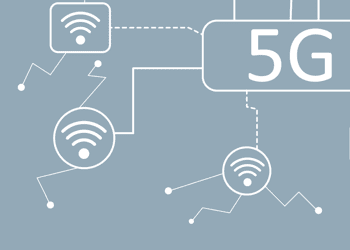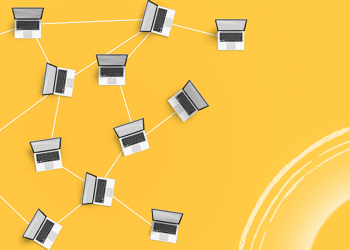No matter your particular industry, healthcare, hospitality, financial, government, multi-tenant commercial buildings, education, and more, internet access is crucial. With all the options available, it can, however, be difficult to decide what form of internet access is best for your organization. What are the advantages of fiber internet? Of fixed wireless internet? In the past, the high-end default option was fiber. Now, installing fixed wireless internet should be given a closer look.
Does Your Industry Demand Reliable Internet Connectivity?
The world moves at the speed of business, and business in our current world depends on high-speed internet. No matter your brand of business, an uninterrupted flow of data and continuous access to partners and information are crucial. How does this apply in your industry? Let’s look at some examples.
Education
More than ever before, education is taking the classroom to a cloud-based environment, and schools need networks optimized for this increased usage. Students will need to access the school network from smartphones, tablets, and laptops, so the network needs to be available and efficient.
Financial
Financial institutions rely on secure data transfers between sometimes remote branch locations and other institutions, as well as reliable real-time connections to the financial markets. A failure to communicate effectively costs customers and investors, as well as the financial institution itself.
Government
In our world, government must provide efficient services by using fewer resources, while ensuring the security of every bit of data with which it is entrusted. There is no room for breakdowns and security breaches.
Healthcare
In the healthcare industry, secure transfer of patient records is vital. Communication between patients and healthcare providers, and among physicians, is increasing dramatically. Reliable internet services connecting hospitals and care centers in outlying areas are vital.
Hospitality
More than ever before in the hospitality industry, the customer experience is paramount. And that means high-speed internet in all rooms and scalable bandwidth for conferences. Hotels that cannot guarantee this are left behind.
Multi-Tenant Buildings
Multi-tenant commercial buildings that house businesses, reliable high-speed internet is a crucial selling point. Business initiatives that require a strong connectivity mean property owners and managers must supply this important demand or lose tenants.
What is Involved in a Fiber Internet Installation?
When an organization chooses fiber internet service, installation can take up to 90 days or more. Companies often promise a quick installation, but there are many considerations that impact the timeline.
- Availability – If a fiber internet matrix is nearby, installation can proceed closer to your plan. But, if there is not a nearby fiber connection, this could mean waiting or extra costs to run it closer.
- Building Attributes – Is there sufficient space within your building to install fiber internet? Often, especially in older buildings, upgrades to the building must be completed before the internet installation can even begin. These upgrade costs are often passed down to tenants or customers.
- Conduit – Fiber is pulled through a conduit that runs from the street to the building. If it’s not there already, the client is often responsible for paying for its installation. Sometimes the conduit is present, but full. This delays the install as a new one must be laid.
- Permits – Securing the necessary permits for digging and construction can become an issue, especially in highly regulated municipalities. This can add significant time and even higher costs to your project.
- Physical Obstacles – Fiber is essentially a cable that must be laid, so obstacles like highways, railroads, rivers, historical sites, and other physical obstacles can delay your installation or significantly raise the cost.
- Processing – Connecting fiber internet to any building requires cooperation with the Incumbent Local Exchange Carrier (ILEC). Fiber internet service providers must work with major carriers to ensure that any service request can be fulfilled. There are various levels of approval that must be obtained before any installation steps can even begin.
What is Involved in a Fixed Wireless Internet Installation?
The simplest internet installation process today is with fixed wireless. In most cases, installing fixed wireless internet can be accomplished within 10 to 14 days of completing a service agreement. In certain urgent situations, the process can even be completed within 24 hours.
Your wireless internet service provider simply installs a radio receiver on top of your building. This receiver is then aimed at the transmitter radio located on a tower or another tall building. Here are some factors to consider before installing fixed wireless internet.
- Approval from the Building Owner – Installing the receiver device on top of the building requires approval from the building owner or property manager. Most radio receivers are mounted with non-penetrating roof mounts to lower the impact on the building roof. Permission is usually acquired with ease.
- Line of Sight – A fixed wireless internet installation requires a clear line of sight between the tower and your building’s roof. If this is not immediately available, the ISP may need to erect a pole or construct a new tower. This may mean a slight delay.
- Licensed Link Requirements – In some circumstances, users must obtain a licensed frequency connection from the Federal Communications Commission (FCC). This can take some time.
Both fiber internet and fixed wireless internet solutions offer many advantages. When looking at your particular needs and budget, and the need for reliable, secure connectivity and cost effectiveness, there is one clear choice: fixed wireless internet.
How Do I Get Started With Fixed Wireless?
When you’re ready to get started with fixed wireless, the place to start is with MHO Networks. We’re a well-known and widely used provider of point-to-point fixed wireless technology. We offer the speed, bandwidth, and low latency needed for your particular industry through a FCC licensed connection. Give us a call or connect with us online and let us help you get started with a powerful new option in internet access.



![[Infographic] Fixed Wireless: What You Need To Know](https://blog.mho.com/wp-content/uploads/2017/06/Screenshot-2025-06-24-141710.png)


